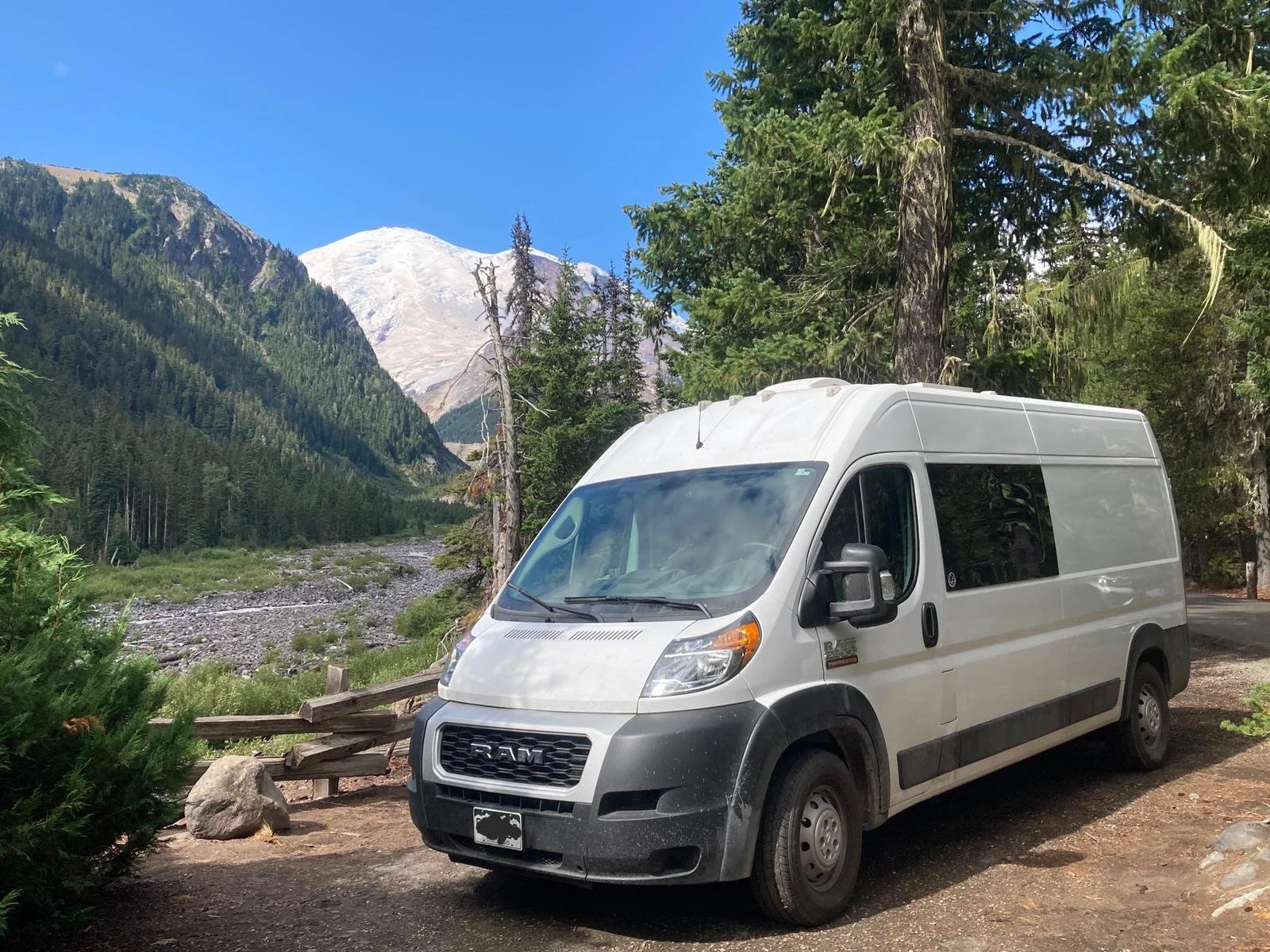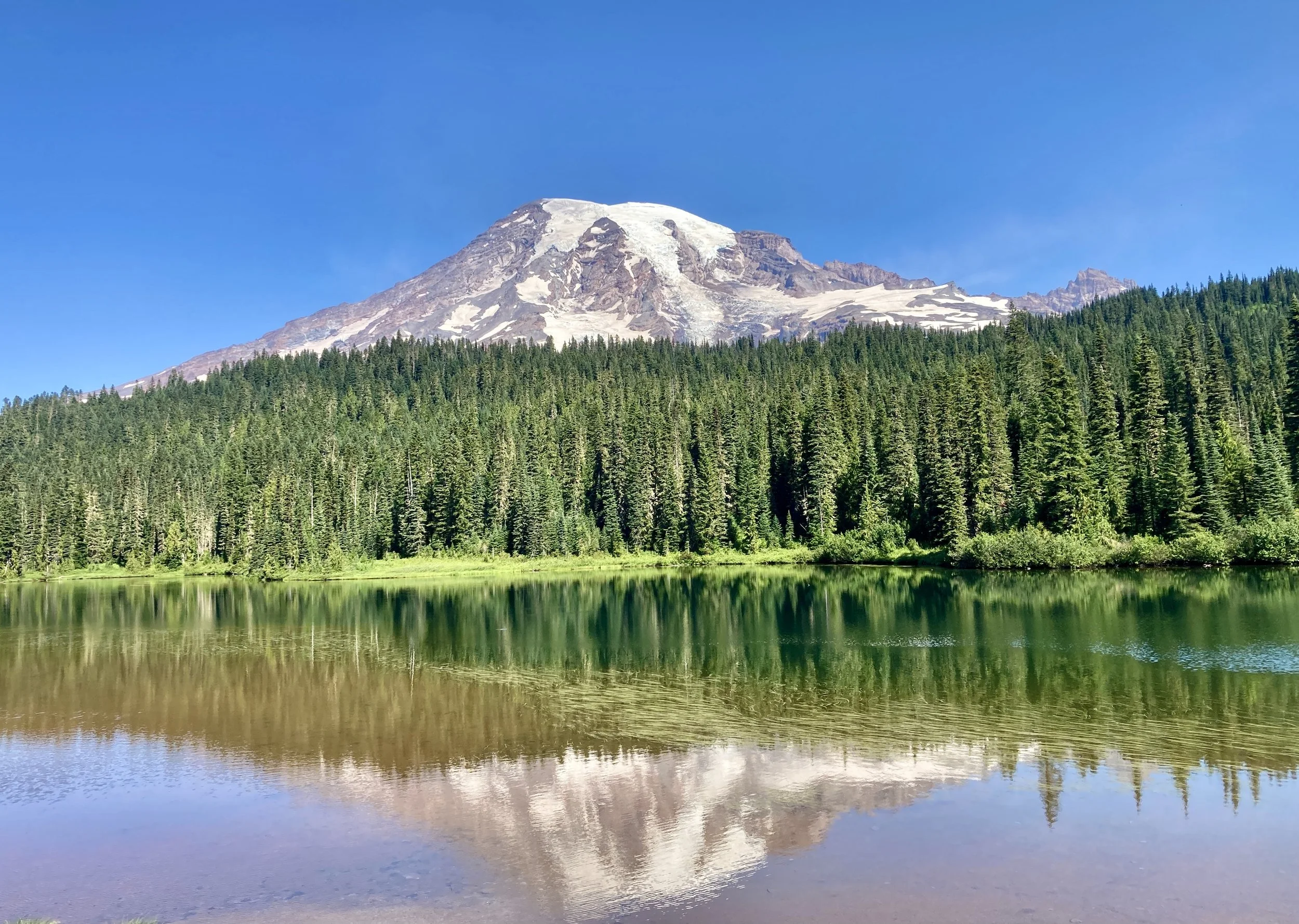The Curse of Frantic Travel: Observations from a National Park Campground
THE spot at White River Campground
After three weeks of mountain biking and camping in the smoke-obscured mountains of Southwest Montana, we decided that we needed a breath of fresh air—quite literally. Perusing the smoke map was downright depressing. We had hoped to travel through and explore some new parts of Idaho, but the Salmon area was now the epicenter of one of the worst fires in the northern Rockies. We had a week of vacation scheduled and suddenly had no plans, so we decided to pivot quickly and hit the road to the destination that would be the most fun, with the least smoke.
We settled on Mount Rainier National Park.
Mount Rainier National Park has been on my wishlist for years. Everything that I'd read about the place and all the photos I'd seen had me in awe. After spending time in Chamonix and Norway, I've become enthralled with glaciated peaks, and Mount Rainier reigns as the most glacier-covered mountain in the Lower 48.
It's also downright massive. Soaring to a sky-scraping elevation of 14,411 feet above sea level, Rainier's location just a few miles from the Pacific Ocean makes that number even more significant. Rainier claims an incredible 13,210 feet of prominence, making it "the most topographically prominent mountain in the contiguous United States," according to Wikipedia.
Mount Rainier and Reflection Lake
I just had to see this monster. But first, we had to find a campsite.
National Park Camping
After some basic online research, we discovered that the White River Campground on the eastern side of the park offers a whopping 112 sites but is still operated as a first-come, first-served campground. Unfortunately, first-come, first-served campgrounds are a rarity these days. The COVID pandemic prompted most of the remaining old-school campgrounds to switch to an online reservation system. In 2021, this has resulted in campgrounds across the country being completely booked well in advance for months at a time.
For certain legs of our travels, I try to plan far in advance to organize logistics, make trail plans, and hopefully make lodging reservations. I thought trying to book a campsite in Bozeman over a month in advance would give me plenty of time to score a reservation, but I was sorely mistaken. Every campground in Bozeman was completely booked by that point in time—and so was Mount Rainier National Park.
Except for White River.
We strategized our day and arrival time perfectly and swooped in as campsites were clearing out on Sunday morning. Add a dash of luck to the recipe, and we rolled right into *the* campsite at White River. Located directly above the river, our spacious site offered an easy pull-through driveway for the van and easily the best views of the mountain in the entire campground. Score!
This would easily be my longest stay in a national park. I've mostly avoided national park camping over the past, oh, 14 years due to the crowds, the competitive reservation system, and the lack of mountain biking. But stumbling on such an incredible first-come, first-served campground was a massive boon and opened up the opportunity to experience this national park in a very different way.
While I understand why having a campground reservation can put your mind at ease about your upcoming trip plans, I mourn for the days when you could travel freely and without plans through the mountain west. It used to be that if you could just strategize your arrival time properly, you would be guaranteed a campsite.
Especially in Colorado, those memories feel like an ancient time now long gone. The freedom of moving where the wind blows (or in our case, against the blowing of the wind) is unparalleled. But as more and more restrictions, reservation systems, and permit plans are instituted, the freedom to move as you wish disappears at a shocking rate.
But thankfully, in this instance, we got incredibly lucky! Since we scored such a fantastic campsite, we booked into White River for a solid week, stoked to be in one place and not have to move for quite a while.
What People Call “Travel”
During the course of that week, I was shocked to see how quickly people moved in and out of the campground. People with classic tent-camping setups and tons of associated camping gear would often roll into the campground mid-day and spend 2-3 hours setting up camp. Then by 9am the next morning, they would have torn everything down, packed up all their supplies, and hit the road again. The speed at which some of these people were traveling and the amount of time they wasted by setting up and tearing down gear every single day absolutely blew my mind. If they repeated the same process every single day, then the vast majority of their vacation would be spent simply unfurling tents, moving boxes around, and then putting it all away again.
I also couldn't help but notice how little these people saw during their time in Rainier. Most of the tourists would simply stop off at a couple of easily-accessible roadside viewpoints, snap a few pictures, and then spend the rest of the day setting up camp. And they'd call that a visit to a national park.
Leaving the crowds behind as we got way off the beaten track.
How many national parks were they trying to fit into their one-week vacation? 3? 5?
This isn't an exaggeration. Some travelers my girlfriend follows on Instagram will plan 10-day trips across the nation and attempt to fit in two dozen national parks into that span of time (plus, you know, 3,000 miles of driving).
And here I was bemoaning how an entire week-long vacay wasn't nearly enough time to soak in the grandeur of Mount Rainier.
Wherever we go, we do our best to embody an ethos of slow travel. My theory is that any place worth visiting is worth spending at least a month, and we do our best to operate with a one-week minimum. If we're going somewhere, we try to spend at least a week before moving on to the next spot.
Of course, this isn't always possible. Sometimes obligations get in the way—I might need to make it to a particular destination on a particular day for the beginning of a media trip, for instance. But when life slows down, we find that just about every destination is worth spending several weeks (or more) exploring.
This type of slow travel is known as "vagabonding," thanks to the book by the same name. The idea consists of slowly savoring each location, of digging into each destination to truly understand what makes the place unique and special. The longer you spend in each spot, the deeper you'll dig, and the more you'll begin to uncover.
The next time you head out for a trip, I exhort you to slow down and spend the entire week or two in one confined area. You might be amazed at how much adventure each town or each park has to offer!



